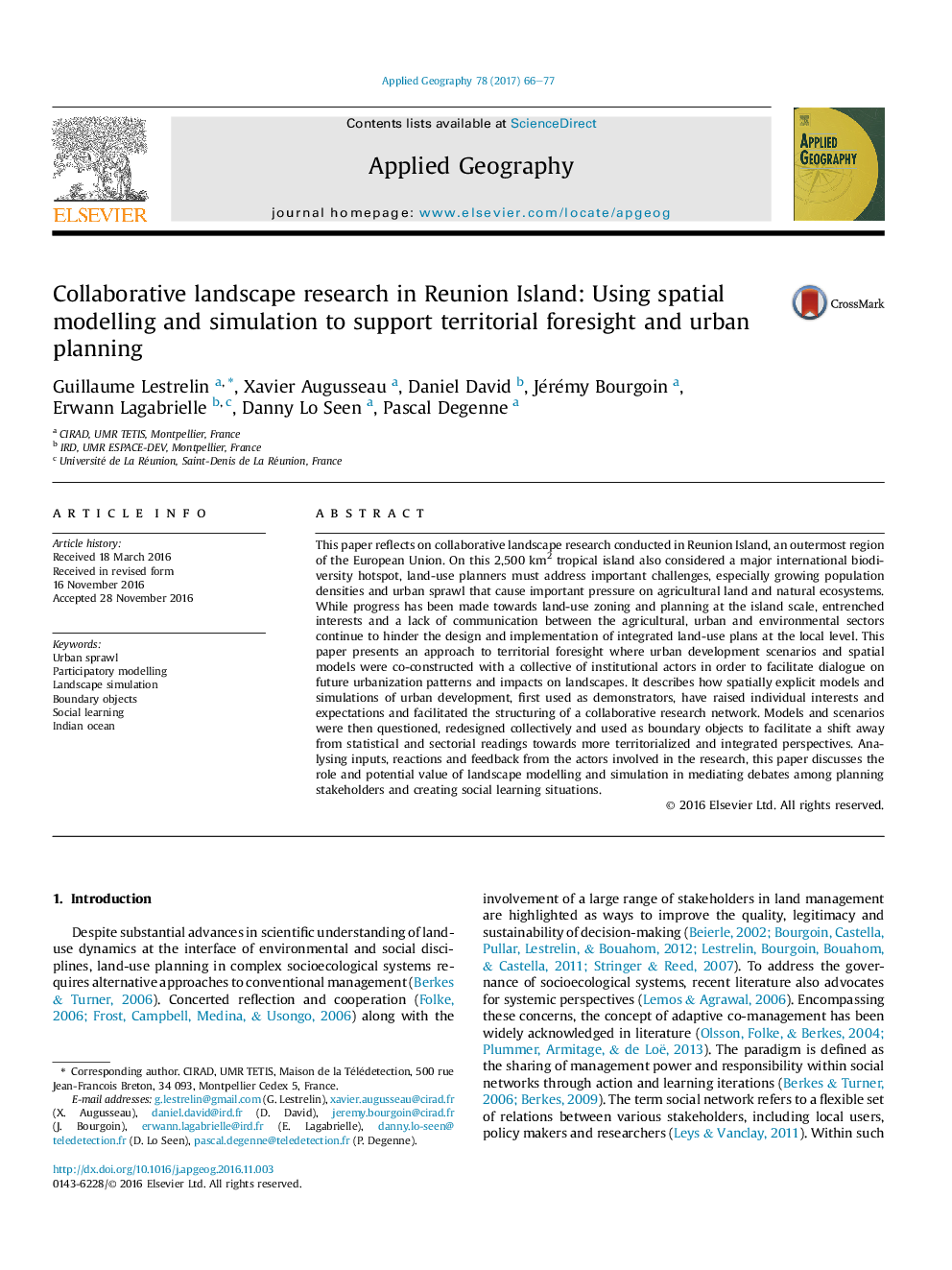ترجمه فارسی عنوان مقاله
تحقیقات چشم انداز همکاری در جزیره رونیون: استفاده از مدل سازی و شبیه سازی فضایی برای حمایت از پیش بینی های منطقه ای و برنامه ریزی شهری
عنوان انگلیسی
Collaborative landscape research in Reunion Island: Using spatial modelling and simulation to support territorial foresight and urban planning
| کد مقاله | سال انتشار | تعداد صفحات مقاله انگلیسی |
|---|---|---|
| 125009 | 2017 | 12 صفحه PDF |
منبع

Publisher : Elsevier - Science Direct (الزویر - ساینس دایرکت)
Journal : Applied Geography, Volume 78, January 2017, Pages 66-77
ترجمه کلمات کلیدی
پراکندگی مراکز شهری، مدل سازی مشارکتی شبیه سازی چشم انداز، اشیاء مرزی یادگیری اجتماعی، اقیانوس هند،
کلمات کلیدی انگلیسی
Urban sprawl; Participatory modelling; Landscape simulation; Boundary objects; Social learning; Indian ocean;

